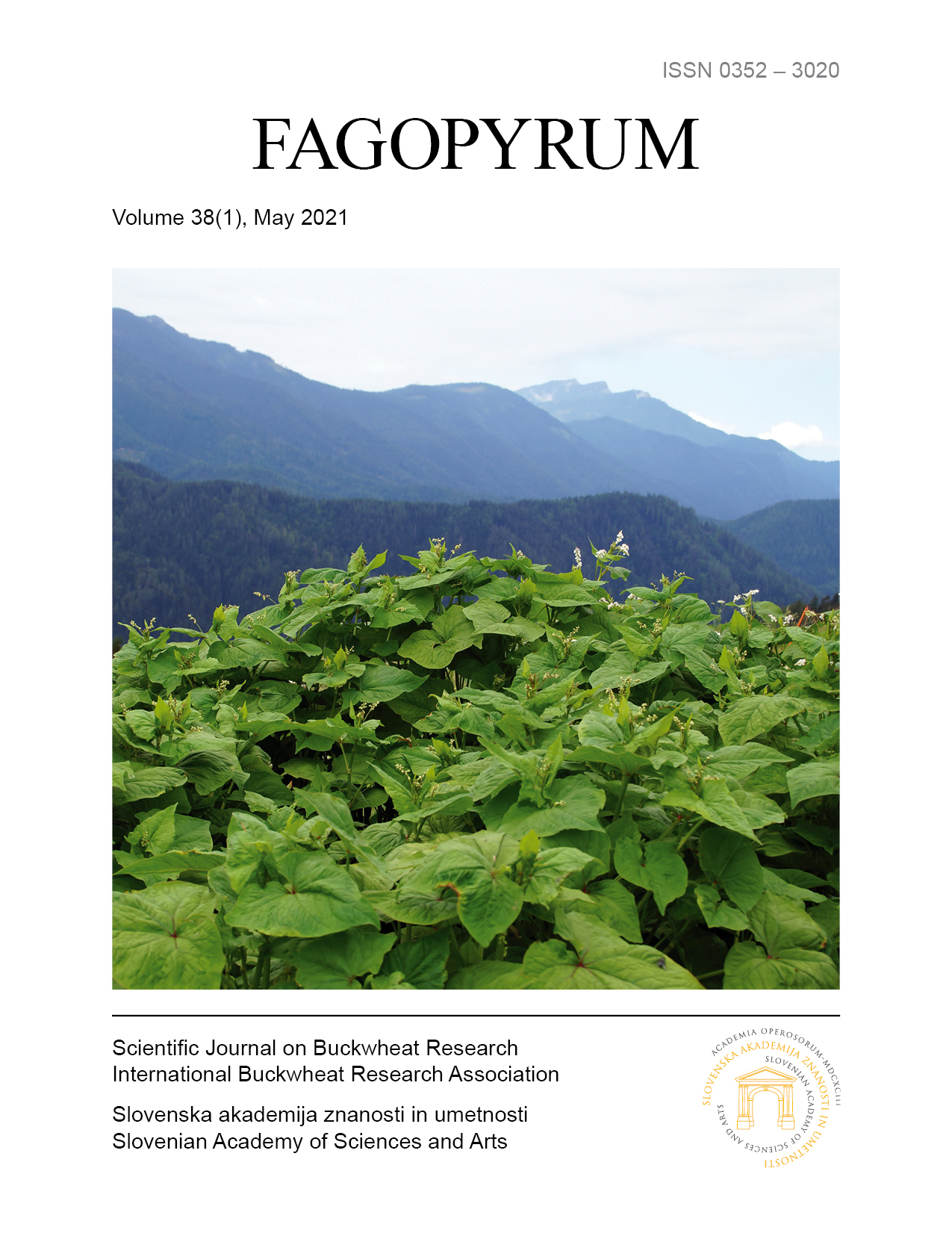Response of common buckwheat and Tartary buckwheat from different elevations to selenium treatment
DOI:
https://doi.org/10.3986/fag0019Abstract
Common buckwheat and Tartary buckwheat were grown in Slovenia outdoors at different elevations – 300 m, 600 m and 1180 m a.s.l. Both species were foliarly treated with selenium twice (in the vegetative phase and in the flowering phase). The effects of Se treatment and different growing locations on selected biochemical, physiological and anatomical traits were monitored. In Se treated common buckwheat, amount of chlorophylls was higher in plants from Ljubljana (the lowest elevation – 300 m a.s.l.) than in plants grown in Podbeže (600 m a.s.l.), whereas in control group, plants grown in Ljubljana contained more chlorophylls than plants from Javorje (the highest elevation – 1180 m a.s.l.). In both buckwheat species, Se alone did not affect amount of chlorophylls in any of location. In Se treated common buckwheat plants, the amount of UV absorbing compounds was the highest in plants, grown at the highest elevation. In common buckwheat, Se lowered the number of CaOx in plants, grown in Javorje. Conditions at different elevations, as well as treatments with Se, did not affect potential and effective photochemical efficiency of Photosystem II.
Keywords: common buckwheat, Tartary buckwheat, elevation, selenium, morphological characteristics, biochemical characteristics

